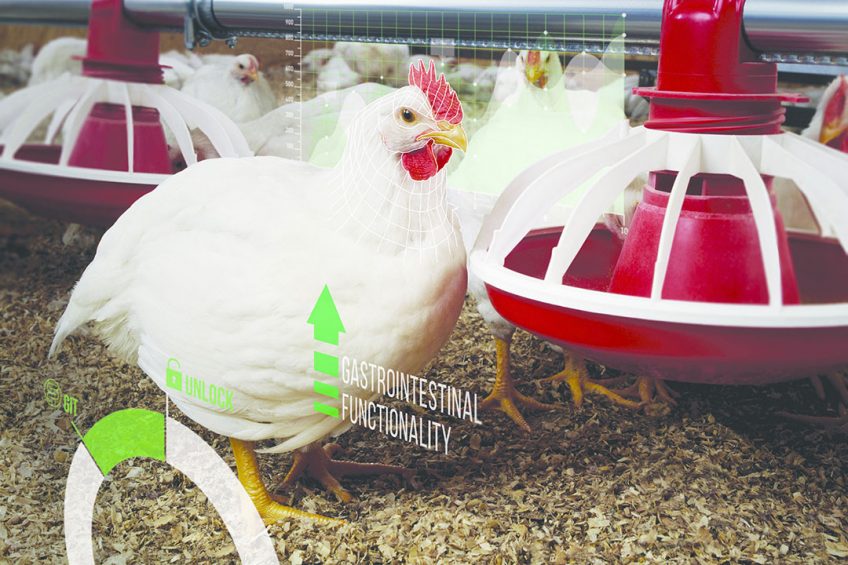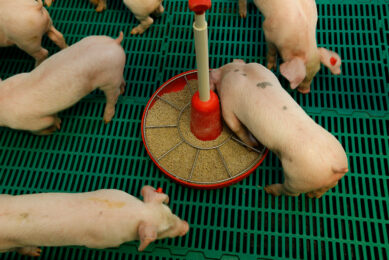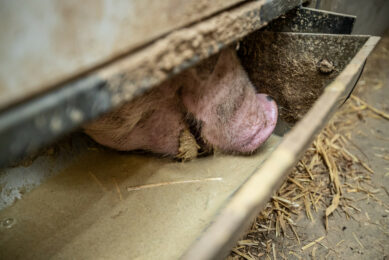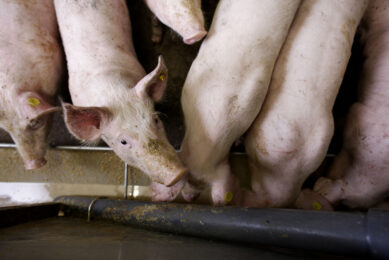Poultry gut function: It’s all in the detail

Effective gastrointestinal functionality is becoming increasingly important in animal nutrition and health, where it plays a key role in profitable and sustainable production. But what do we actually know about gastrointestinal functionality?
Gastrointestinal functionality is defined as a steady state where the microbiome and the intestinal tract exist in symbiotic equilibrium, and where the welfare and performance of the animal are not limited by intestinal dysfunction. Regulation of gastrointestinal tract (GIT) function is a multifactorial phenomenon encompassing: a tailored diet, structural and functional integrity of gastrointestinal barrier, microbiota/host interaction, effective feed digestion and absorption, as well as optimal animal welfare and immune status.
Optimising gastrointestinal functionality through balancing feed composition and the microbiota is crucial to ensure effective feed utilisation. However, emerging scientific evidence suggests that previously unobserved factors may affect optimal gastrointestinal function and hinder animal performance. Understanding these influences makes it possible to transform current nutritional strategies, allowing farm animals to become more resilient to environmental and physiological challenges, while optimising their gastrointestinal functionality, performance and health, see Figure 1.
Figure 1 – Main components contributing to gastrointestinal functionality.

Peptidoglycans and GIT functionality
Peptidoglycan (PGN), also known as murein, is a structural polymer consisting of sugars and amino acids that naturally occurs in the cell walls of bacteria. PGN account for up to 90% of the dry weight in Gram positive bacteria – bacteria that populates approximately 75% of the microbiota in the intestinal tract of poultry and swine. PGNs are the main components of bacterial cell debris which are constantly being released into the gut as bacterial cells divide and die, creating an abundant source of PGN in the intestine. As a result, bacterial cell debris can physically interfere with normal gut function (Figure 2).
Figure 2 – Dead bacteria and bacterial cell wall fragments in the gut.

Until recently, the presence of dead bacterial biomass in the gastrointestinal tract has been largely overlooked in nutrition research, which has mainly focused on the living portion of the microbiota. There is now growing recognition that the accumulation of bacterial cell wall fragments on the surface of the gut wall interferes with its capacity to absorb nutrients into the bloodstream, therefore reducing digestibility and feed efficiency, and adversely affecting animal performance.
Unlocking the hidden potential
Traditionally, animal farmers have used interventions that target living bacteria, modulating their population or killing them. Balancius, designed by DSM, takes a different approach by targeting dead bacteria. It is the first and only microbial muramidase that works in the intestine to help keep the balance between nutrition, microbiota and host well-being. Its unique mode of action degrades PGNs and effectively helps clearing bacterial cell debris in the gastrointestinal tract without disturbing the functional microbiota. This process unlocks the potential in gastrointestinal functionality and significantly improves feed efficiency through enhanced digestibility and feed utilisation, leading to weight gain. Data shows that Balancius optimises gastrointestinal functionality by enhancing nutrient digestion and absorption. The resulting extra nutrient uptake transforms into a consistent improvement of the feed conversion ratio (FCR) of broiler chickens by 4-6 points (3%).
Benefits to sustainability
Supplementation of the product also incorporates significant improvements in sustainability. By including it in the feed of one million broilers (grown to an individual weight of 2.5 kg, FCR = 1.64), feed producers can reduce the FCR to 1.59, meaning 125,000 kg less feed needed to grow the same quantity of meat. Furthermore, if the product was used in all broiler diets across Latin and North America, it is estimated to save 4.2 million tonnes of greenhouse gas emissions.
Balancius is poised to revolutionise poultry nutrition by improving the capacity for sustainable poultry production, which translates into significant savings for animal producers.
As of end 2018, the product has been regulatory approved in a significant number of countries all over the world, for use in broilers, starting with the United States, Brazil and Mexico. The regulatory plans target a global coverage, with a clearance in Europe as a key milestone, in the course of 2019, where it is already coined with a favourable opinion from the European Food Safety Authority, validating its safety and its efficacy. Ongoing trials are currently addressing the potential for the extension of the product into other species.
Authors: Dr Rual Lopez-Ulibarri, Innovation Project Director & Ole Lund Svendsen, Global Category Manager Eubiotics, DSM Animal Nutrition and Health











